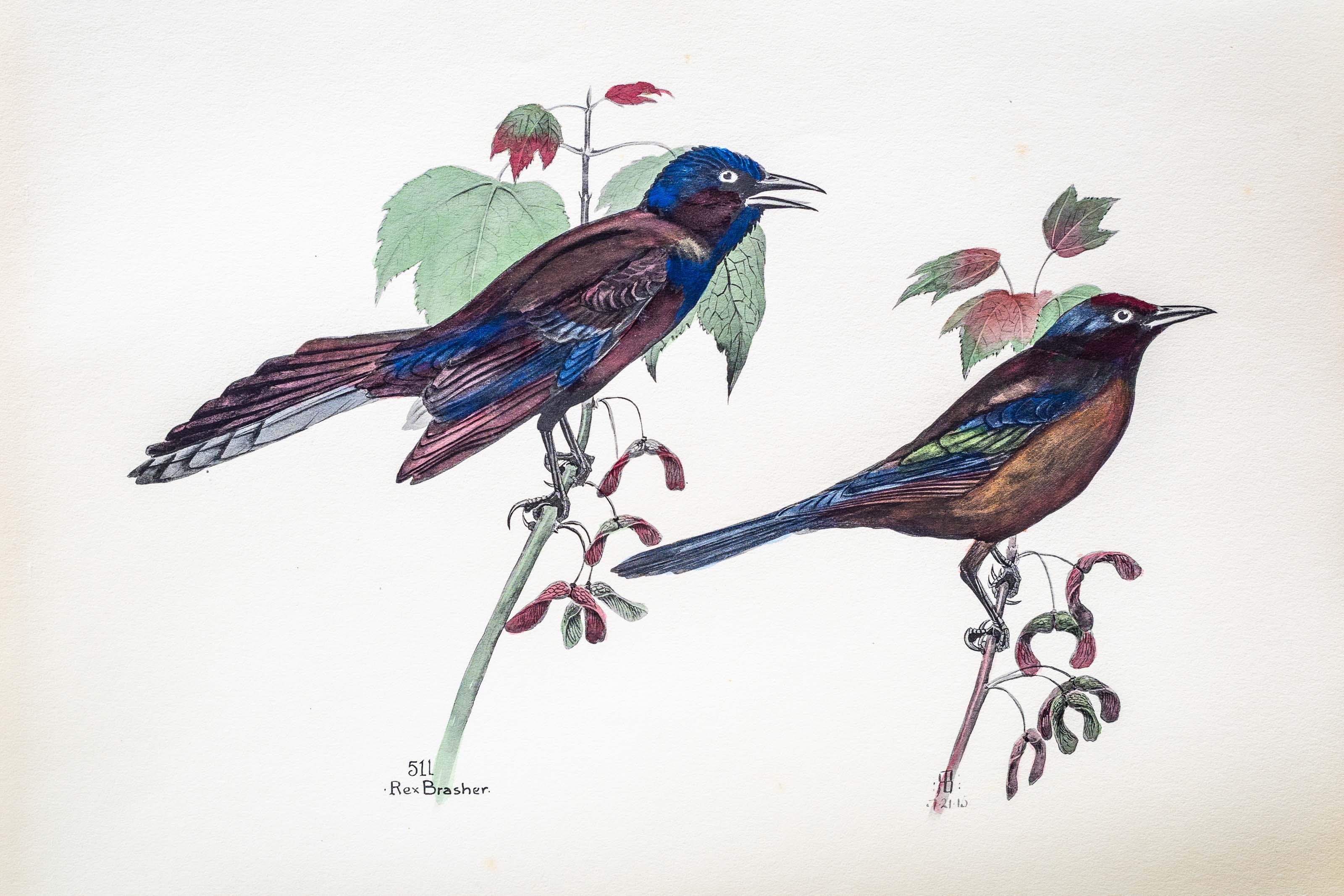
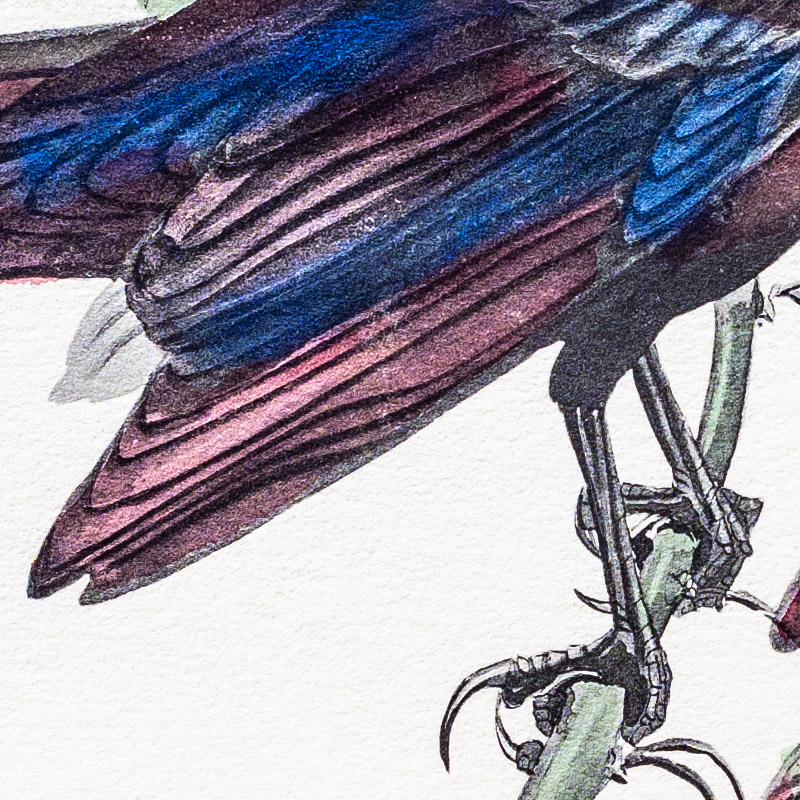
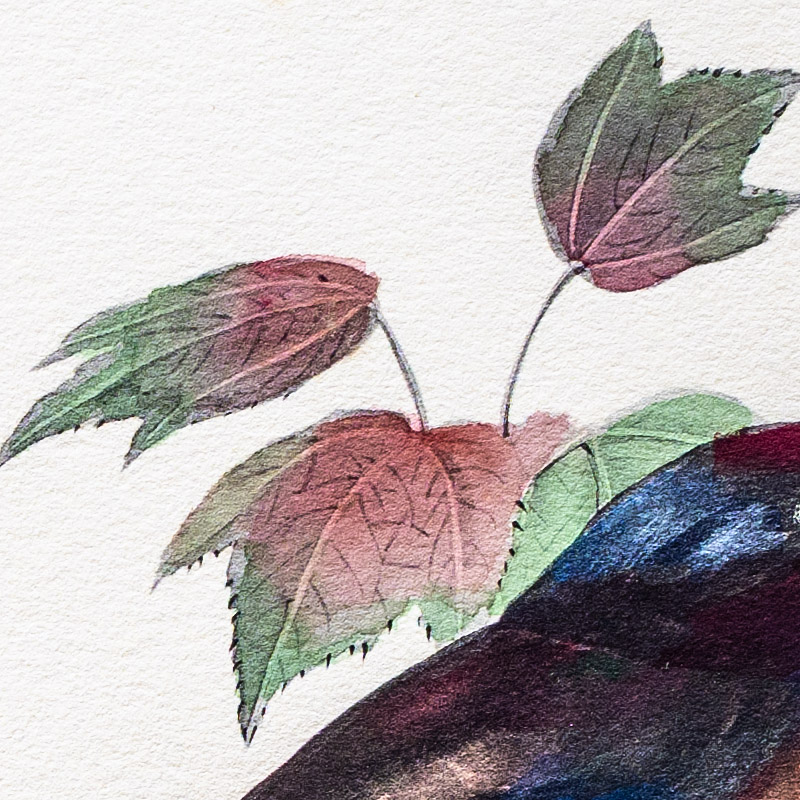
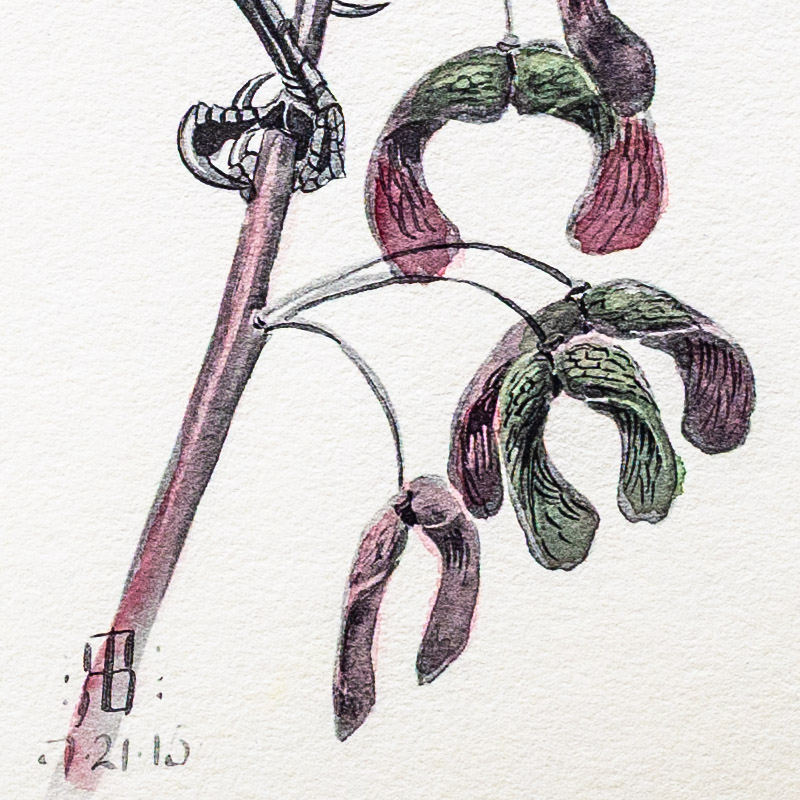
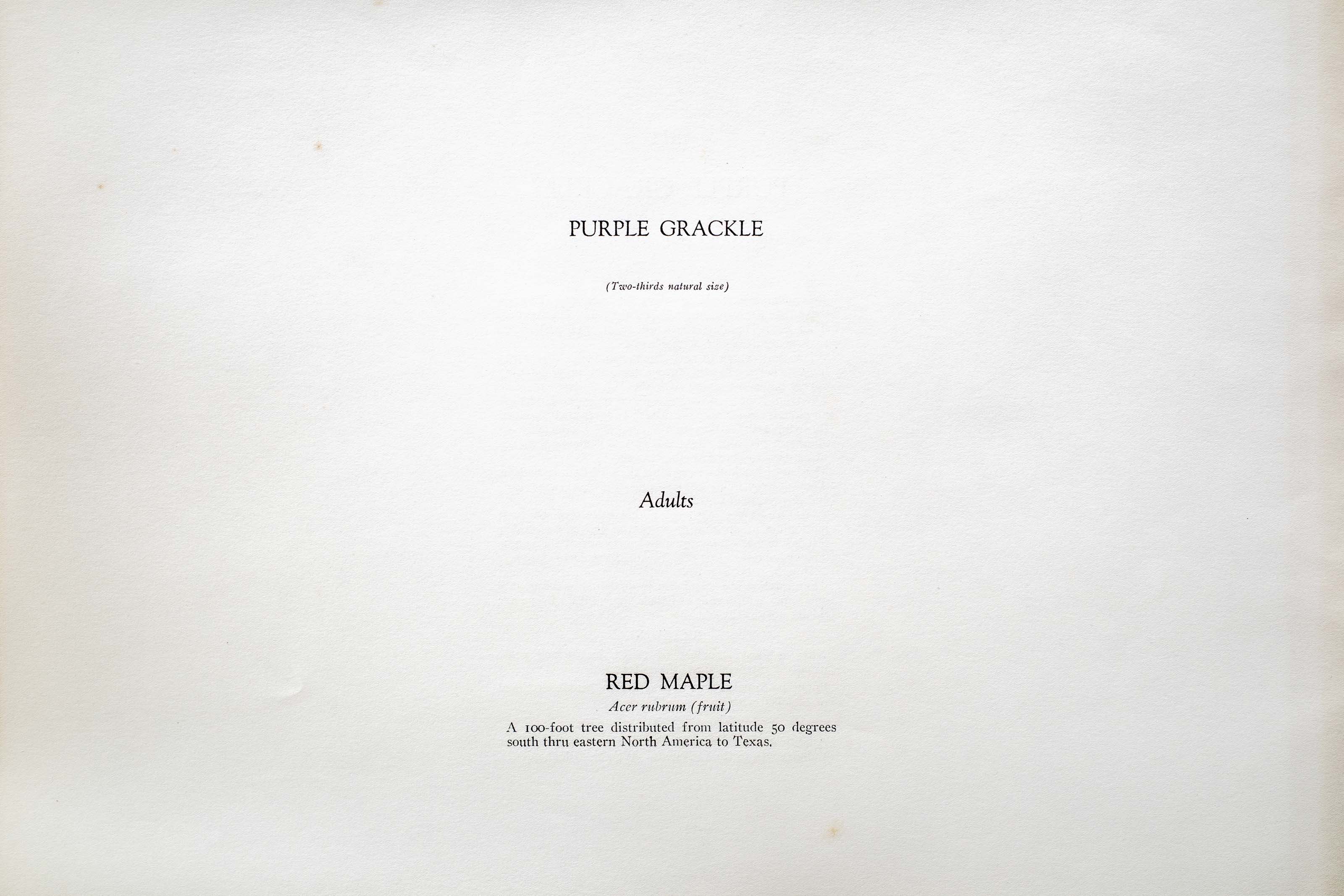
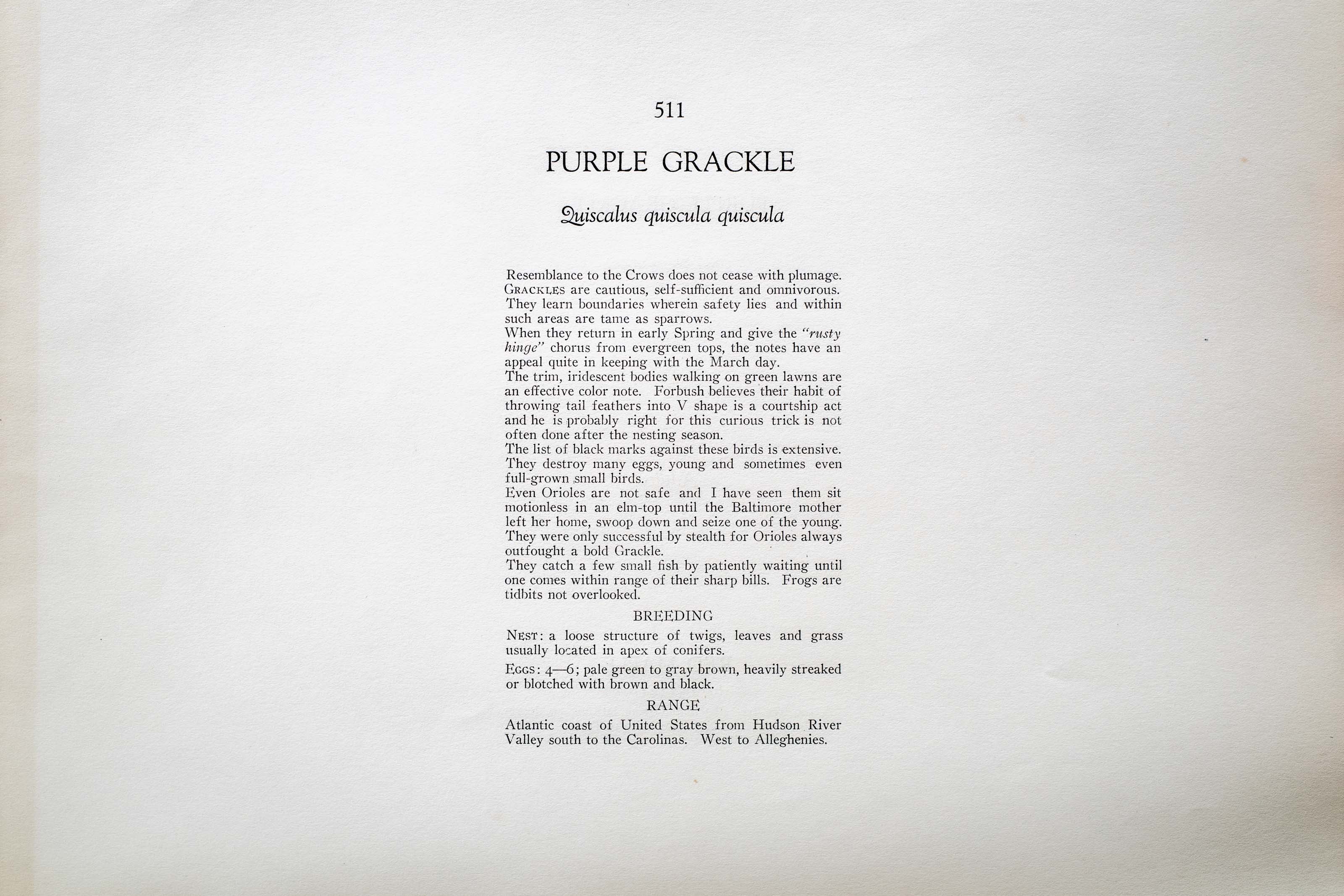

1915
1931
8
511
A team of dedicated board members, volunteers, and student interns has published every page in Volume 9. This volume includes 360 images of paintings and lyrical descriptions of birds, now available online for everyone to enjoy anywhere in the world. This is a monumental task. Each volume requires approximately 400 hours to photograph, edit, transcribe, catalog, and publish online. We need your support to complete this work.
If you're tech-savvy, have a good eye, are meticulous with details, and love structured data, please consider volunteering by emailing us at hello@rexbrasher.org.
We encourage all bird lovers and supporters to consider a monetary donation to support our mission to make Rex's work available for everyone. You can provide a one-time or recurring donation online.
Resemblance to the Crows does not cease with plumage. GRACKLES are cautious, self-sufficient and omnivorous. They learn boundaries wherein safety lies and within such areas are tame as sparrows.
When they return in early Spring and give the "rusty hinge" chorus from evergreen tops, the notes have an appeal quite in keeping with the March day.
The trim, iridescent bodies walking on green lawns are an effective color note. Forbush believes their habit of throwing tail feathers into V shape is a courtship act and he is probably right for this curious trick is not often done after the nesting season.
The list of black marks against these birds is extensive. They destroy many eggs, young and sometimes even full-grown small birds.
Even Orioles are not safe and I have seen them sit motionless in an elm-top until the Baltimore mother left her home, swoop down and seize one of the young. They were only successful by stealth for Orioles always outfought a bold Grackle.
They catch a few small fish by patiently waiting until one comes within range of their sharp bills. Frogs are tidbits not overlooked.
NEST: a loose structure of twigs, leaves and grass usually located in apex of conifers.
EGGS: 4–6; pale green to gray brown, heavily streaked or blotched with brown and black.
Atlantic coast of United States from Hudson River Valley south to the Carolinas. West to Alleghenies.
A 100-foot tree distributed from latitude 50 degrees south thru eastern North America to Texas.